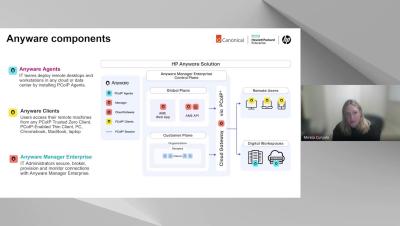Operations | Monitoring | ITSM | DevOps | Cloud
VDI
Felixble and cost effective VDI solution with HPE and Canonical
Unleash new ways of working with flexible, cost-effective VDI
What Is VDI? Virtual Desktop Infrastructure Defined
AVD Monitoring for MSPs (Managed Service Providers)
AVD (Azure Virtual Desktop) has grown in popularity and for many reasons many organizations are choosing to consume AVD via a specialist Managed Service Provider (MSP). For the MSPs offering AVD, monitoring and troubleshooting AVD especially for multi-tenant environments is challenging and involves significant, costly and skilled effort using native tools such as Azure Insights or Azure Monitor.
VMware Horizon Monitoring
Regardless of whether you are a system administrator or an end-user, convenient and secure access to essential apps and desktops is essential to perform your tasks efficiently. Due to the new imperative of working remotely, virtual desktop infrastructure (VDI) solutions such as VMware Horizon, Citrix VDI, and many more have significantly boosted over the past few years. In fact, the VDI market is expected to grow from about $14 billion in 2022 to about $50 billion by 2030. Today we want to take a closer look at VMware Horizon, the importance of having proper monitoring, and what options to choose from.
Performance and User Experience Monitoring for Citrix Linux Workspaces
Citrix for Linux VDI and DaaS options allow organizations to deploy Linux digital workspaces and Linux applications that can then be accessed by end-users from Linux or non-Linux endpoints. This allows organizations to deploy applications optimized for Linux OSs to users using mobile, Mac, Windows, and BYOD (Bring Your Own Device) endpoints as well as those using native Linux.
Performance Monitoring for AWS NICE DCV VDI and Cloud Protocol
In today’s article, I will be highlighting eG Enterprise’s monitoring capabilities for Amazon’s AWS NICE DCV VDI protocol that was used first in Amazon’s AppStream 2.0 and now subsequently also in WSP 2.0 for the Amazon WorkSpaces service for digital workspaces.
Choosing the Best Virtual Desktop Infrastructure (VDI) Technology for Your Enterprise
Virtual desktop infrastructure (VDI) is a technology that refers to the use of virtual machines to provide and manage virtual desktops. Users access virtual desktops from their laptops, desktops, thin clients, or mobile devices from anywhere. Virtual desktops are hosted in a data center, on servers, and all the necessary processing is done on the server that hosts the virtual desktops.
The Three-Month Fix: How AbbVie Kept Their VDI Users Up and Running
The complexity of today’s workplace technology means that all of our environments are incredibly unique. Two organizations may use the same platforms and applications, but the tactics we use to implement these tools are all unique to our own goals and business needs. But all of us who work in IT and engineering can agree: our companies’ success hinges on our ability to keep our environments running smoothly. I’m a senior engineer at the pharmaceutical company AbbVie.










